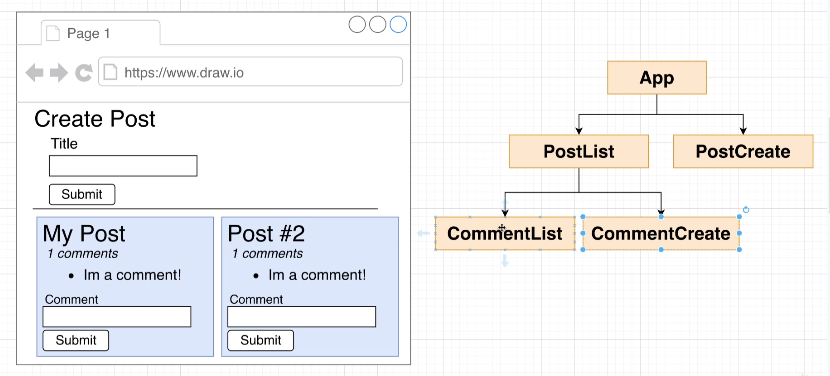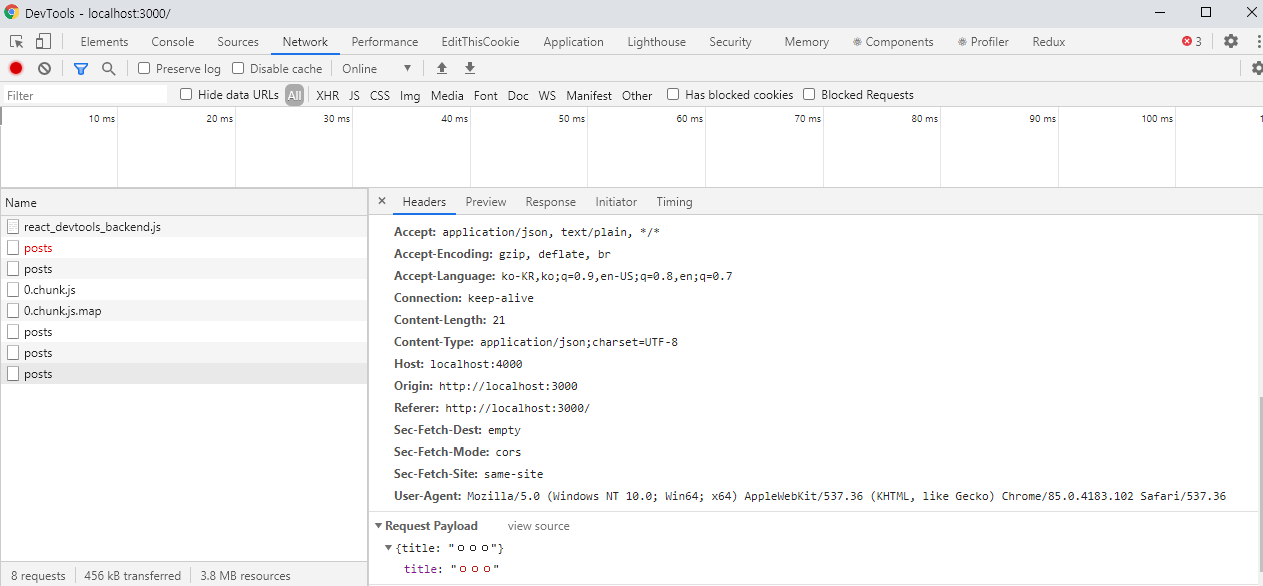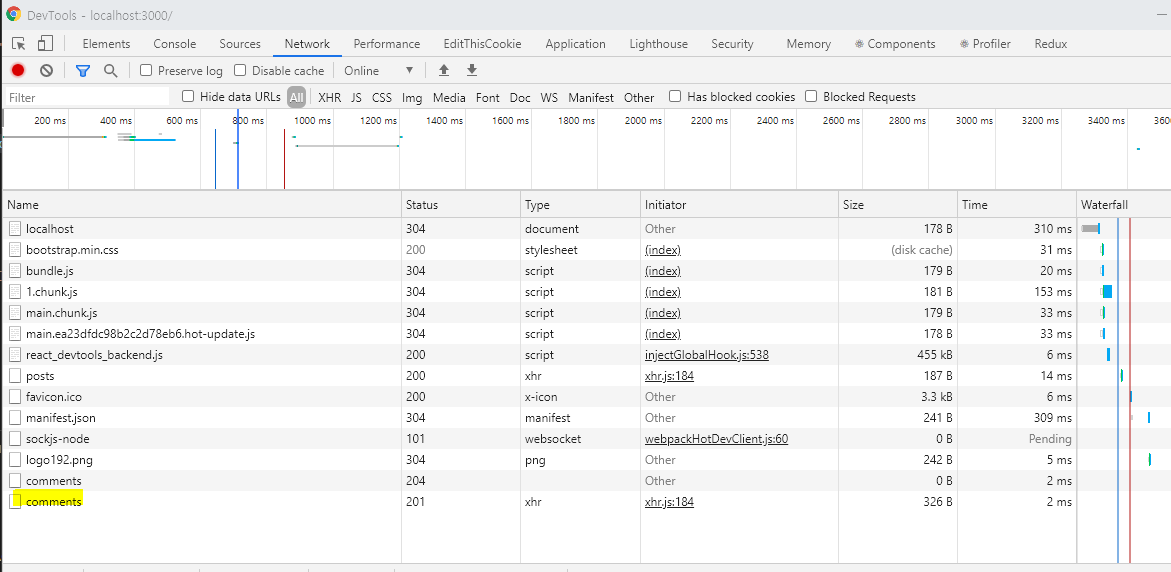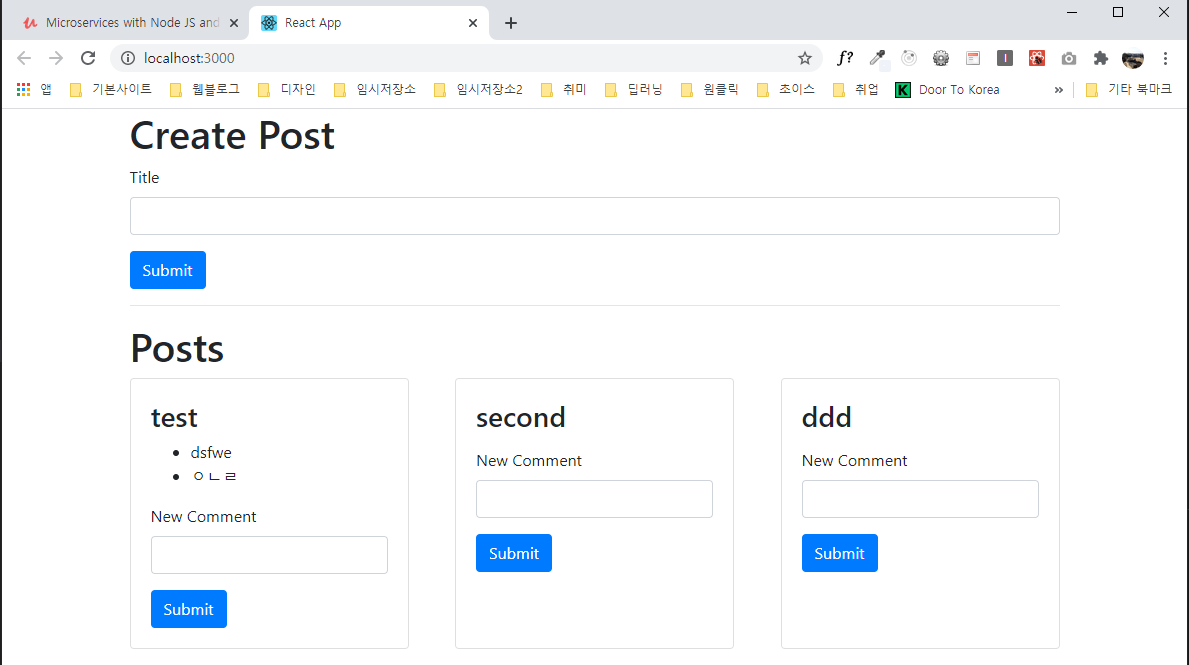
시작하기에 앞서서...
본 게시글은 https://www.udemy.com/course/microservices-with-node-js-and-react/ 강의를 듣고 정리한 내용입니다.
이번시간에는 프론트엔드를 구성해보겠습니다.

이 시리즈는 마이크로서비스를 실습하기 위해서 작성하는 것이므로 그냥 이렇게 작성했구나 하고 넘어가도록 합니다.
Creating Posts
Post를 생성하는 부분
import React, { useState } from "react";
import axios from "axios";
const PostCreate = () => {
const [title, setTitle] = useState("");
const onSubmit = async (event) => {
event.preventDefault();
await axios.post("http://localhost:4000/posts", {
title,
});
setTitle("");
};
return (
<div>
<form onSubmit={onSubmit}>
<div className="form-group">
<label>Title</label>
<input
value={title}
onChange={(e) => setTitle(e.target.value)}
className="form-control"
/>
</div>
<button className="btn btn-primary">Submit</button>
</form>
</div>
);
};
export default PostCreate;App.js에다가 추가시켜줘야 정상적으로 나옵니다.
import React from "react";
import PostCreate from "./PostCreate";
function App() {
return (
<div className="container">
<h1>Create Post</h1>
<PostCreate />
</div>
);
}
export default App;

전송에러가 났습니다. 이유는 CORS라고 해서 보안 상의 이유로, 브라우저는 스크립트에서 시작한 교차 출처 HTTP 요청을 제한합니다. 즉, 프론트엔드는 localhost:3000이고 백엔드는 localhost:4000 이기 때문에 에러가 난다는 뜻입니다.
해결방법으로는? backend에서 npm install cors를 해줍니다. 그런다음 코드에다가도 추가해줍니다.
import cors from "cors";
const app = express();
app.use(cors());
(...생략...)하지만 이렇게 되면 모든 요청에 대해 허가를 하게 되어 보안적으로 취약해질 수 있다고 합니다. 따라서 옵션을 주는것도 가능합니다.
const corsOptions = {
origin: 'http://localhost:3000', // 허락하고자 하는 요청 주소
credentials: true, // true로 하면 설정한 내용을 response 헤더에 추가 해줍니다.
};
app.use(cors(corsOptions)); // config 추가
// 출처 : https://velog.io/@wlsdud2194/cors
에러가 해결되었습니다. 이렇게 해서 전송까지 마쳤습니다.
Fetching and Rendering Posts
PostCreate를 했으니까 이번에는 PostList를 통해 Post를 보여주도록 하자.
// PostList.js
import React, { useState, useEffect } from "react";
import axios from "axios";
const PostList = () => {
const [posts, setPosts] = useState({});
const fetchPosts = async () => {
const res = await axios.get("http://localhost:4000/posts");
// res.data에 서버가 응답해준 데이터가 들어있음
setPosts(res.data);
};
// useEffect와 빈괄호는 딱 한번만 초기에 실행한다는 의미
useEffect(() => {
fetchPosts();
}, []);
// Object.values() 메소드는 전달된 파라미터 객체가 가지는
// (열거 가능한) 속성의 값들로 이루어진 배열을 리턴
const renderedPosts = Object.values(posts).map((post) => {
return (
<div
className="card"
style={{ width: "30%", marginBottom: "20px" }}
key={post.id}
>
<div className="card-body">
<h3>{post.title}</h3>
</div>
</div>
);
});
return (
<div className="d-flex flex-row flex-wrap justify-content-between">
{renderedPosts}
</div>
);
};
export default PostList;
이렇게 작성하고 나서 App.js에서 불러주면 된다(생략)

작성한대로 잘 나타나는것을 볼 수 있다.
Creating Comments
이제 각 post에 해당하는 댓글을 작성하는 기능을 추가해보자.
// CommentCreate.js
import React, { useState } from "react";
import axios from "axios";
const CommentCreate = ({ postId }) => {
const [content, setContent] = useState("");
const onSubmit = async (event) => {
event.preventDefault();
await axios.post(`http://localhost:4001/posts/${postId}/comments`, {
content,
});
setContent("");
};
return (
<form onSubmit={onSubmit}>
<div className="form-group">
<label>New Comment</label>
<input
value={content}
onChange={(e) => setContent(e.target.value)}
className="form-control"
/>
</div>
<button className="btn btn-primary">Submit</button>
</form>
);
};
export default CommentCreate;PostCreate.js와 거의 판박이이다. 추가적으로 PostList.js에서 CommentCreate를 불러준다. 그때 postId를 props으로 넘겨주도록 한다.
<div className="card-body">
<h3>{post.title}</h3>
<CommentCreate postId={post.id} />
</div>
동작은 이상없이 잘 되는거 같다.
Displaying Comments
마지막으로 각 post에 comments를 입력한 리스트를 출력해주도록 하자.
// CommentList.js
import React, { useState, useEffect } from "react";
import axios from "axios";
const CommentList = ({ postId }) => {
const [comments, setcomments] = useState([]);
const fetchPosts = async () => {
const res = await axios.get(
`http://localhost:4001/posts/${postId}/comments`
);
setcomments(res.data);
};
useEffect(() => {
fetchPosts();
}, []);
const renderedComments = comments.map((comments) => {
return <li key={comments.id}>{comments.content}</li>;
});
return <ul>{renderedComments}</ul>;
};
export default CommentList;이러고 나서 PostList.js에서 불러주기만 하면 끝이다.
<div className="card-body">
<h3>{post.title}</h3>
<CommentList postId={post.id} />
<CommentCreate postId={post.id} />
</div>
마침
드디어 기본적인 구성이 끝났네요. 다음시간부터는 본격적으로 마이크로서비스 전략에 대해 알아보도록 하겠습니다.
